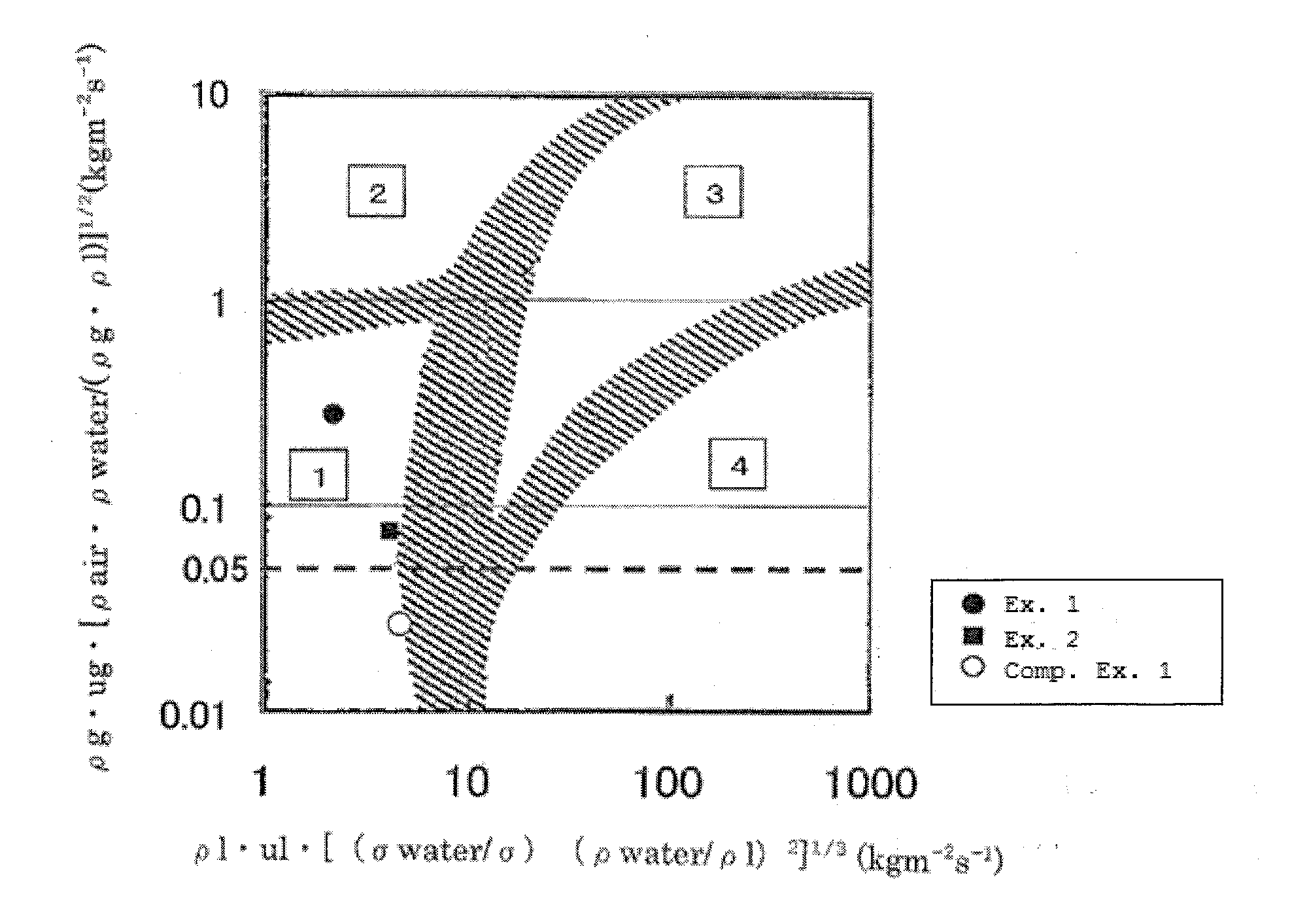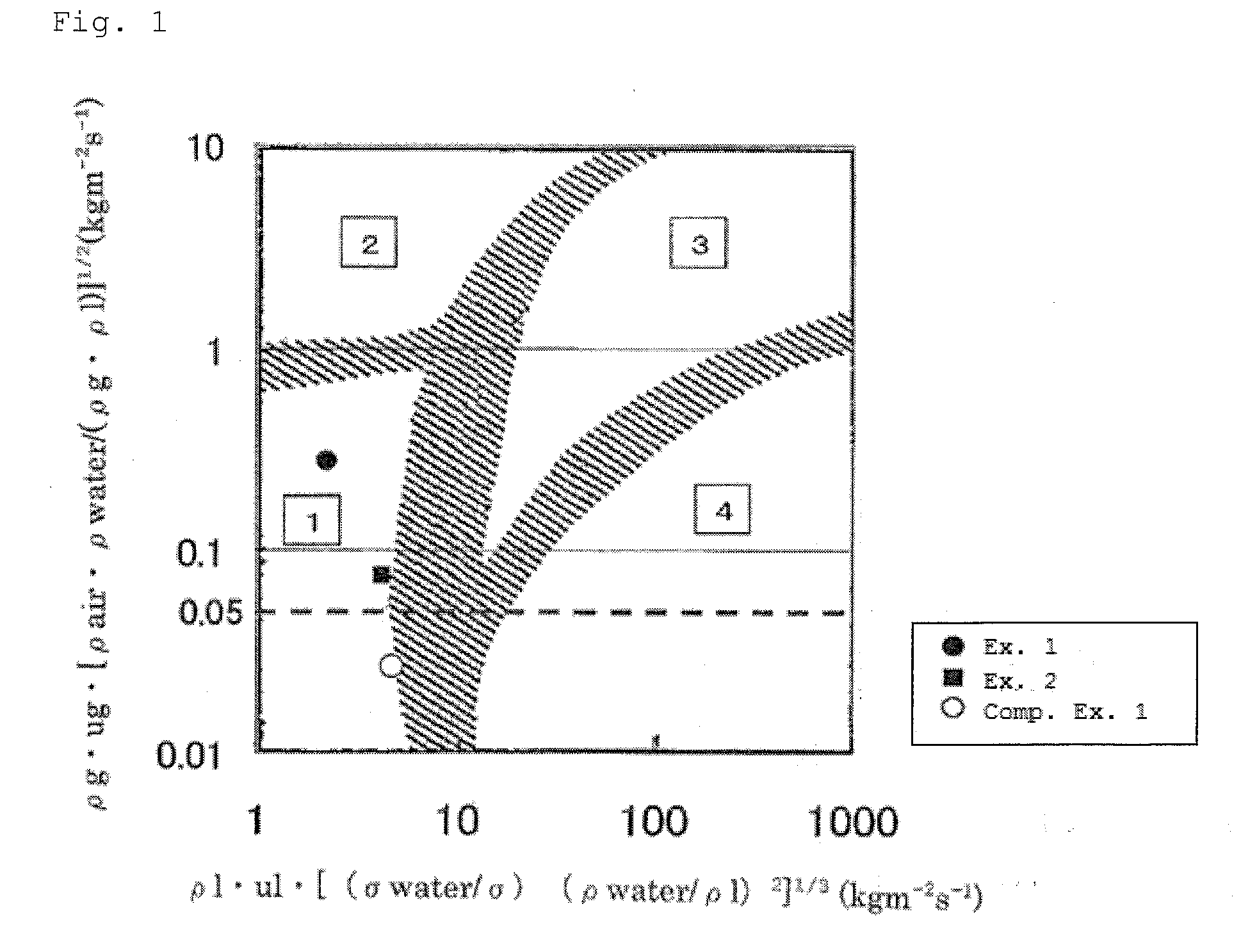Process for producing alkylated aromatic compounds and process for producing phenol
- Summary
- Abstract
- Description
- Claims
- Application Information
AI Technical Summary
Benefits of technology
Problems solved by technology
Method used
Image
Examples
example 1
[0072]A catalyst test was carried out in which cumene was produced from isopropanol and benzene as raw materials.
[0073]β-zeolite catalyst (pellets 1.5 mm in diameter, manufactured by TOSOH CORPORATION) weighing 2435 g was loaded in a stainless steel vertical reaction tube 38.4 mm in inner diameter and 4800 mm in length. After the loading, isopropanol was supplied from the top of the reactor at 24 L / h and the catalyst was washed for 1 hour.
[0074]While the reactor pressure was maintained at 3 MPaG and the preheating temperature at 175° C., benzene: 8.1 L / h, isopropanol: 0.65 L / h and hydrogen: 1900 NL / h were supplied from the top of the reactor to perform reaction. The liquid weight hourly space velocity (WHSV) under these conditions was 3.0. A mixture of the reaction liquid and gas that was discharged from the reactor bottom was separated in a gas-liquid separation tank, and the oil phase and the aqueous phase were separated in an oil-water separation tank. When the reaction had been ...
example 2
[0080]A catalyst test was carried out with the same experimental apparatus and under the same reaction conditions as in Example 1, except that the hydrogen was fed at 500 NL / h. The isopropanol conversion was 100% and the cumene selectivity was high at 86.9%.
[0081]In Example 2, the flow state was in a trickle-bed zone and the reaction gas flow rate was 0.075.
[0082]x-axis: ρl·ul·[(φwater / φ)(ρwater / ρl)2]1 / 3 (kgm−2s−1)=4.269
[0083]y-axis: ρg·ug·[ρair·ρwater / (ρg·ρl)]1 / 2 (kgm−2s−1)=0.075
PUM
| Property | Measurement | Unit |
|---|---|---|
| Flow rate | aaaaa | aaaaa |
| Structure | aaaaa | aaaaa |
Abstract
Description
Claims
Application Information
 Login to View More
Login to View More - R&D Engineer
- R&D Manager
- IP Professional
- Industry Leading Data Capabilities
- Powerful AI technology
- Patent DNA Extraction
Browse by: Latest US Patents, China's latest patents, Technical Efficacy Thesaurus, Application Domain, Technology Topic, Popular Technical Reports.
© 2024 PatSnap. All rights reserved.Legal|Privacy policy|Modern Slavery Act Transparency Statement|Sitemap|About US| Contact US: help@patsnap.com









